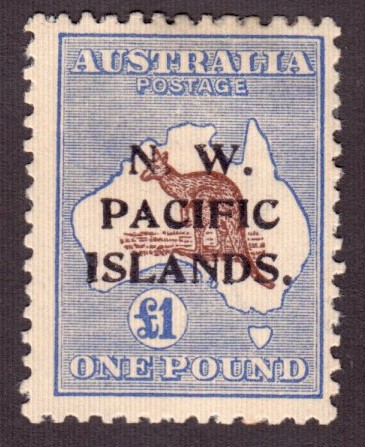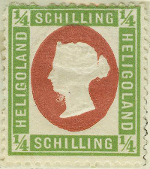
Discussion - Member to Member Sales - Research Center

Discussion - Member to Member Sales - Research Center


Hi to all
If you look from the end of the Tiara, you can see a wide white streak, which looks like a bald spot on Queen victoria's head, is this a common variety?
Regards
Horamakhet

Login to Like
this post
I haven't looked at my small queens in a long time, but here goes:

It seems like that missing streak of color to the left of the tiara is ubiquitous in the 2c varieties, both early and late, as shown in the two top rows.
However, on the 3c varieties, there are 3 distinct lines of color extending to the left of the tiara. I do notice wide disparity in the inking of individual stamps, as shown by comparing the two images in the bottom row.
I admire your eye for detail. Have you attempted to plate an individual issue?
I've never felt that motivated, although this is a very intriguing area of philately.
It's quite possible that the small queens have already been plated, and what you're seeing are position-specific varieties.
I have about 30 of the 3c small queens that would make a good start...
But, what you need for a plating exercise are multiples. Many of them.
Regards,
-Paul

Login to Like
this post
More on plating, in case anyone is interested. Here is a page from Denmark 2 Rigsbank-Skilling 1951-1852 by Sten Christensen.

Gives an idea of what is involved in distinguishing plate positions. This is a remarkable book covering the first stamp of Denmark. What follows this page in the book is 48 pages each illustrating every position with a 100-word description. There is also a black & white reproduction of both Type I and Type II panes pasted onto the end paper for examination. Just shows what is possible...
Another issue that is very satisfying to plate (there are only 20 positions) is the Pony Express stamps. I have a good reference, and I use it frequently to weed out fakes.
-Paul

Login to Like
this post
Here's a well-known forgery of Denmark 1, just to illustrate the utility of plating:

Looks pretty dang good from the image, but the most striking deviations are the deformed crown and posthorn. It's one of at least 11 different forged types known.
This item sold on eBay last week for $53 (not to me) despite being described as a forgery.
You might say, "I don't need to plate the stamp to determine whether it's a forgery or not." Yes, but being able to plate it just adds another layer of certainty to a field fraught with uncertainty.
OK, now I've REALLY subverted this thread!
Sorry, Horamakhet!

Login to Like
this post
Hi pigdoc
I actually inherited a large world collection of stamps from the family.
There are litterally thousands of stamps. As I was getting tired of examining my collection of Australian George V, it thought I would check out some of the other countries for a change, and then spotted the balding queen.
nothing like a good subversion
Regards
Horamakhet

Login to Like
this post


Hi to all
If you look from the end of the Tiara, you can see a wide white streak, which looks like a bald spot on Queen victoria's head, is this a common variety?
Regards
Horamakhet

Login to Like
this post
03:05:48pm
re: BALDING QUEEN VICTORIA
I haven't looked at my small queens in a long time, but here goes:

It seems like that missing streak of color to the left of the tiara is ubiquitous in the 2c varieties, both early and late, as shown in the two top rows.
However, on the 3c varieties, there are 3 distinct lines of color extending to the left of the tiara. I do notice wide disparity in the inking of individual stamps, as shown by comparing the two images in the bottom row.
I admire your eye for detail. Have you attempted to plate an individual issue?
I've never felt that motivated, although this is a very intriguing area of philately.
It's quite possible that the small queens have already been plated, and what you're seeing are position-specific varieties.
I have about 30 of the 3c small queens that would make a good start...
But, what you need for a plating exercise are multiples. Many of them.
Regards,
-Paul

Login to Like
this post
03:36:43pm
re: BALDING QUEEN VICTORIA
More on plating, in case anyone is interested. Here is a page from Denmark 2 Rigsbank-Skilling 1951-1852 by Sten Christensen.

Gives an idea of what is involved in distinguishing plate positions. This is a remarkable book covering the first stamp of Denmark. What follows this page in the book is 48 pages each illustrating every position with a 100-word description. There is also a black & white reproduction of both Type I and Type II panes pasted onto the end paper for examination. Just shows what is possible...
Another issue that is very satisfying to plate (there are only 20 positions) is the Pony Express stamps. I have a good reference, and I use it frequently to weed out fakes.
-Paul

Login to Like
this post
04:19:58pm
re: BALDING QUEEN VICTORIA
Here's a well-known forgery of Denmark 1, just to illustrate the utility of plating:

Looks pretty dang good from the image, but the most striking deviations are the deformed crown and posthorn. It's one of at least 11 different forged types known.
This item sold on eBay last week for $53 (not to me) despite being described as a forgery.
You might say, "I don't need to plate the stamp to determine whether it's a forgery or not." Yes, but being able to plate it just adds another layer of certainty to a field fraught with uncertainty.
OK, now I've REALLY subverted this thread!
Sorry, Horamakhet!

Login to Like
this post

re: BALDING QUEEN VICTORIA
Hi pigdoc
I actually inherited a large world collection of stamps from the family.
There are litterally thousands of stamps. As I was getting tired of examining my collection of Australian George V, it thought I would check out some of the other countries for a change, and then spotted the balding queen.
nothing like a good subversion
Regards
Horamakhet

Login to Like
this post

